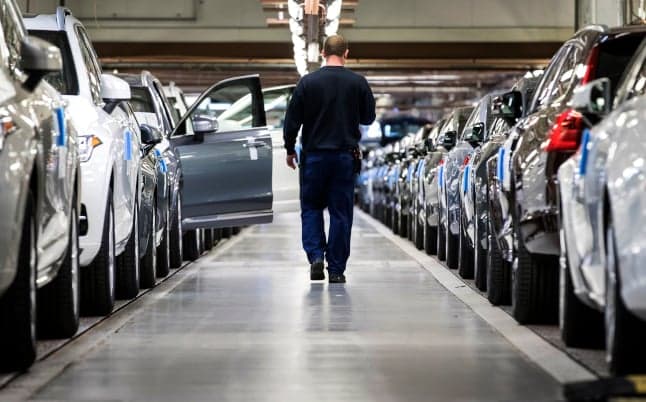Volvo to invest 10 billion kronor in iconic Gothenburg factory

Volvo plans to invest 10 billion kronor in its Gothenburg plant in Sweden as it switches production to electric cars.
The Swedish subsidiary of China's Geely, which announced last March that it will move to a 100-percent-electric range by 2030, will make this investment in the Torslanda plant "in coming years, in preparation for the production of that next generation of fully electric cars".
The factory, which opened in 1964, is the oldest currently in use and largest of the Gothenburg-based carmaker, with nearly 6,500 employees, producing 1,250 vehicles per day.
This investment comes on the heels of another major project in Volvo's electrification strategy, the announcement of the construction of a joint factory with Swedish battery maker Northvolt, also near Gothenburg.
Part of a research and development centre, the battery factory will eventually employ 3,000 people and is part of an investment of around 3 billion euros.
From 2019 Volvo Cars has limited itself to only selling hybrid or all-electric models, and is one of the most advanced manufacturers of electric vehicles.
But car manufacturers worldwide are rapidly moving towards electric vehicles and are increasing the number of factory conversions to move away from the combustion engine.
French company Renault is investing in its Douai site in northern France, as is Volkswagen in Zwickau in Germany and the Japanese company Nissan in Sunderland in England.
Comments (1)
See Also
The Swedish subsidiary of China's Geely, which announced last March that it will move to a 100-percent-electric range by 2030, will make this investment in the Torslanda plant "in coming years, in preparation for the production of that next generation of fully electric cars".
The factory, which opened in 1964, is the oldest currently in use and largest of the Gothenburg-based carmaker, with nearly 6,500 employees, producing 1,250 vehicles per day.
This investment comes on the heels of another major project in Volvo's electrification strategy, the announcement of the construction of a joint factory with Swedish battery maker Northvolt, also near Gothenburg.
Part of a research and development centre, the battery factory will eventually employ 3,000 people and is part of an investment of around 3 billion euros.
From 2019 Volvo Cars has limited itself to only selling hybrid or all-electric models, and is one of the most advanced manufacturers of electric vehicles.
But car manufacturers worldwide are rapidly moving towards electric vehicles and are increasing the number of factory conversions to move away from the combustion engine.
French company Renault is investing in its Douai site in northern France, as is Volkswagen in Zwickau in Germany and the Japanese company Nissan in Sunderland in England.
Join the conversation in our comments section below. Share your own views and experience and if you have a question or suggestion for our journalists then email us at [email protected].
Please keep comments civil, constructive and on topic – and make sure to read our terms of use before getting involved.
Please log in here to leave a comment.